With their thrillingly strange 1972 debut, Roxy Music announced themselves as a band that were unlike anyone else. The singer looks back at how they created a new kind of music – out of Stax, oboes and Marilyn Monroe
“The clothes we were wearing at that time would have put off quite a large chunk of people,” reflects Bryan Ferry. “What I liked about the American bands, the Stax label and Motown, they were into presentation and show business, mohair suits, quite slick. And the cover art, I thought of all the American pop culture icons, Marilyn Monroe: selling cigarettes or beer with a glamorous image. But it was a bit off-kilter as well; there was something a bit strange about it, futuristic as well as retro. All that, instead of a picture of the band, in a dreary street, looking rather sullen. Which was the norm.”
The music inside lived up to the cover’s challenge: a collage of pop-culture nostalgia, hard-rock guitar, piano-driven melodies, stylised high vocals, strange musical structures and experimental sound pictures. Roxy Music’s eponymous album sounded like nothing else in 1971 and 1972 – and like nothing else the group would ever attempt again. Recorded in the first full flush of inspiration, songs such as Ladytron, The Bob (Medley), and Sea Breezes exist outside of their time: a radical synthesis that mapped the future at the same time as it plundered the past.
“We were definitely trying to show our versatility,” says Ferry now. “I had lots of musical influences, plus what the band brought to the table.” Lead guitarist Phil Manzanera, he says, “had this Latin heritage, being born in South America”. Saxophone and oboe player Andy Mackay was classically trained. “[Brian] Eno with his deep interest in experimental music. They were specialists in their field. Paul Thompson brought a lot, with his very powerful, earthy drumming, which was one of the features of the Velvet Underground.”
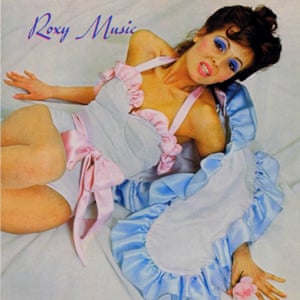
Ferry is talking in his west-London studio. We walk past repeated Warhol Marilyns and sit under a large print of Jerry Hall on the north coast of Anglesey, the cover for Roxy Music’s fifth album, Siren. Wearing a blue jacket, V-neck pullover and tie, Ferry is measured, at once diffident and supremely assured. At 72, he looks great. “The only bit I don’t like is analysing it,” he says of his work. “I do sometimes envy the people who don’t ever have to describe what they’re doing.”
Despite its age and apparent familiarity, Roxy Music’s debut remains thrillingly strange. A new reissue, eight years in the making, traces the development of this revolutionary record that seemingly arrived out of nowhere in June 1972. Combined with the group’s first, 1971 demos, three 1972 John Peel sessions and album outtakes, the songs that would populate Roxy Music come into focus as the bold, honed culmination of lifelong fixations.
Growing up in Washington, County Durham during the monochrome 1950s, Ferry found a lifeline and an inspiration: “I loved American music,” he says. ““From the age of about 10, every week you’d discover somebody new. I was very much into jazz. You know how English people are; there’s a certain amount of musical snobbery. I mean, I loved Little Richard and Fats Domino, but when I heard Charlie Parker for the first time, this was something I really loved, and nobody else who I knew knew anything about him. It’s good to have your private obsessions.”
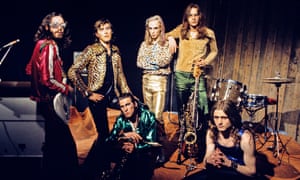
As a paperboy delivering newspapers and weekly music magazines, Ferry read about more music than he could actually hear. “There wasn’t a great deal of jazz on radio. Radio Luxembourg was very important for emerging pop and soul. The BBC had one or two programmes. When the skiffle thing happened, that was when you started hearing Leadbelly and Big Bill Broonzy. That intensity of feeling; that’s what I got, hearing Leadbelly with a 12-string guitar, that yearning in his voice, it struck such a magical chord in me.”
He had similar revelations from hearing Lotte Lenya singing the songs of her husband Kurt Weill and the German soprano Elizabeth Schwarzkopf singing Richard Strauss’s Four Last Songs, He loved the beat poets, TS Eliot and American show tunes. “I liked Fred Astaire, Cole Porter, and I’d hear those songs played by Charlie Parker, Lester Young, Billie Holiday. There was a music store in Newcastle where you could go into a booth and listen to stuff. I lived in there.”
While in the sixth form at Washington Grammar, Ferry joined a group called the Banshees, who played R&B in the local clubs – including the famous Club A Go Go that had provided the launch pad for the Animals. In autumn 1964, he entered the fine art department of Newcastle University, where he was inspired by the British pop-artist Richard Hamilton and Warhol associate Mark Lancaster. After completing his degree, Ferry moved to London, where he supported himself by teaching art and ceramics at a Hammersmith school.
Roxy Music began in the late 1960s, after this move to the capital. Having sung R&B and soul with groups such as the Gas Board and the City Blues, he began to pursue the idea of striking out on his own. “In my college band, I had been imitating whichever song I was singing. We used to do quite obscure covers – Bobby Bland, BB King – but by the time I was writing my own songs, I didn’t want to sound too American. At the time, most English bands tried to sound American. Except for people like King Crimson. They had an English voice, which was quite interesting.”
He was convinced that he could start his own band. “First of all, [it was] just me and Graham [Simpson], the bass player. He had been in my college band. He was a very cool guy, into the beat poets, had a huge jazz collection, all those Blue Note records. He was one of the most interesting people in the band, actually. Sardonic sense of humour. Then Mackay, next, then Eno.”
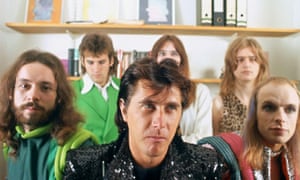
Each new addition brought an element that enabled the new group’s individuality. “The oboe was Andy Mackay’s first instrument, his main thing, although he developed into a great sax player. I met Andy because he had a synthesiser. So Andy brought a) the synthesiser and b) the oboe. Eno, of course, manipulated the synth in the band as soon as he joined, really. Those textures: the oboe is very precise, and the synth sounds were washes, colours, textures, mood enhancers, and so on. So, yes, it was a key part of the sound.”
Together with first guitarist Roger Bunn and drummer Dexter Lloyd, Roxy Music recorded their first demos in May 1971, early versions of The Bob (Medley), Grey Lagoons, 2HB, Chance Meeting and Ladytron. “They were all done in Eno’s flat in Camberwell, which is where we ended up doing a lot of rehearsals. There was a derelict house off Portobello Road where we went as well. That’s when it started. I thought of nothing else, I was quite driven to make it all happen. I would carry the tape around to record labels on my days off from teaching.”
A key early supporter was Richard Williams, who featured the group in Melody Maker during august 1971 before they had any whiff of record company interest. Williams had written glowing and informed reviews of, among other things, the recently reissued first three Velvet Underground albums, which piqued Ferry’s attention. “I always seemed to agree with his taste. So I thought, if anyone is going to like my music, it’s going to be this guy, so I sent him the tape. And he phoned me the same day to say how much he liked it.”
Slowly Roxy Music came into their time. With their Velvet Underground influence, they were tapping into similar sources to David Bowie. But the connections went deeper, into the Warholian fusion of pop and art – an approach prompted by Ferry’s friendship with Lancaster, who had worked in the Factory as a screen-printer in the mid-60s. “He was a really influential guy for me. He was the link between us and Richard Hamilton. All of those people were very influential, working with pop imagery.”

It was Roxy Music’s explicit intention to dissolve the boundaries between high and low. As Michael Bracewell writes in Re-make/Re-model, his account of the group’s founding years, “they chose to inhabit the point where fine art and the avant garde met the vivacity of pop and fashion as an almost elemental force in modern society”.
Produced by King Crimson lyricist Pete Sinfield, Roxy Music came together over two weeks in March 1972. The range of material is extraordinary: almost every song contains sudden twists and turns, like the galloping Joe Meek-style descent that comes out of nowhere in Ladytron. The opener, Re-Make/Re-Model, begins in party noises and breaks into brief, emblematic solos from each instrument. In Sea Breezes, synthesiser washes introduce a heartfelt torch song, which then segues into a strangulated guitar part: next up is the cocktail doo-wop of the tart album closer Bitters End.
“A lot of the first album is first or second take,” Ferry remembers. “Thinking about the songs, some of them are collage-like, with different sounds and moods within them – they will change abruptly into something else. For instance, Sea Breezes is a slow song, and suddenly moves into this angular, quite opposite mood. I found that interesting, and this band was perfect for that; they were game for anything. We were constantly fiddling around, changing things. I was still trying to find my voice. I [now] think sometimes I’m singing too high, or I should have had another go at that.”
It would have been easy to write Roxy Music off as pastiche – as a few die-hard hippies did at the time – but the feeling is authentic: the love, loss and regret in songs such as If There is Something, Sea Breezes and The Bob (Medley). It’s an album of chance encounters and wistful, evasive memories. “On one hand, you try to shape the emotion, but you’ve got to feel it,” says Ferry, “you don’t analyse as you’re doing it.”
Released in the same week as Ziggy Stardust and the Spiders From Mars, Roxy Music entered the UK album charts in late July 1972. Within a month, the group’s first single, Virginia Plain, which wasn’t on the album, was on its way to the Top 10 (it reached No 4). Referencing an art college painting by Ferry, it distilled Roxy’s art-pop manifesto, “what’s real and what’s make-believe”. “It is much more confident,” Ferry says. “We’d made an album and we knew how to do it – sort of. Everyone was featured. It had oboe, the synth, the drums are powerful, and the lyrics were much more assured. I was still finding my feet as a songwriter.”

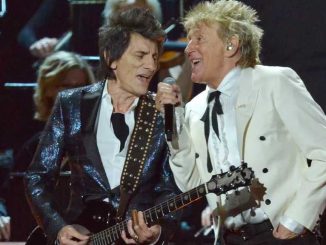
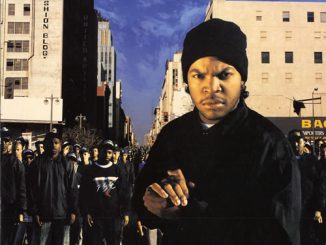

Be the first to comment